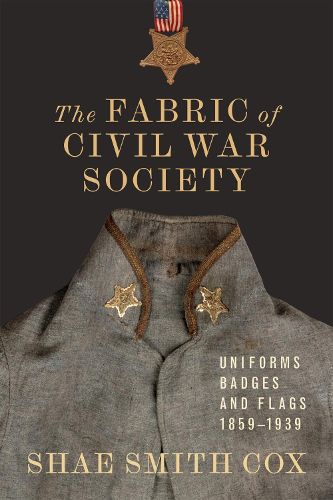Readings Newsletter
Become a Readings Member to make your shopping experience even easier.
Sign in or sign up for free!
You’re not far away from qualifying for FREE standard shipping within Australia
You’ve qualified for FREE standard shipping within Australia
The cart is loading…






Military uniforms, badges, flags, and other material objects have been used to represent the identity of Americans throughout history. In The Fabric of Civil War Society, Shae Smith Cox examines the material culture of America's bloodiest conflict, offering a deeper understanding of the war and its commemoration.
Cox's analysis traces the influence of sewn materials throughout the Civil War and Reconstruction as markers of power and authority for both the Union and the Confederacy. These textiles became cherished objects by the turn of the century, a transition seen in veterans replacing wartime uniforms with new commemorative attire and repatriating Confederate battle flags. Looking specifically at the creation of material culture by various commemoration groups, including the Grand Army of the Republic, the Woman's Relief Corps, the United Confederate Veterans, and the United Daughters of the Confederacy, Cox reveals the ways that American society largely accepted their messages, furthering the mission of their memory work.
Through the lens of material culture, Cox sheds new light on a variety of Civil War topics, including preparation for war, nuances in relationships between Native American and African American soldiers, the roles of women, and the rise of postwar memorial societies.
$9.00 standard shipping within Australia
FREE standard shipping within Australia for orders over $100.00
Express & International shipping calculated at checkout
Military uniforms, badges, flags, and other material objects have been used to represent the identity of Americans throughout history. In The Fabric of Civil War Society, Shae Smith Cox examines the material culture of America's bloodiest conflict, offering a deeper understanding of the war and its commemoration.
Cox's analysis traces the influence of sewn materials throughout the Civil War and Reconstruction as markers of power and authority for both the Union and the Confederacy. These textiles became cherished objects by the turn of the century, a transition seen in veterans replacing wartime uniforms with new commemorative attire and repatriating Confederate battle flags. Looking specifically at the creation of material culture by various commemoration groups, including the Grand Army of the Republic, the Woman's Relief Corps, the United Confederate Veterans, and the United Daughters of the Confederacy, Cox reveals the ways that American society largely accepted their messages, furthering the mission of their memory work.
Through the lens of material culture, Cox sheds new light on a variety of Civil War topics, including preparation for war, nuances in relationships between Native American and African American soldiers, the roles of women, and the rise of postwar memorial societies.